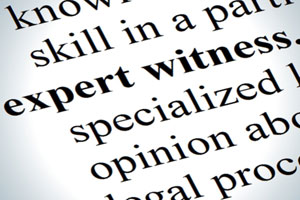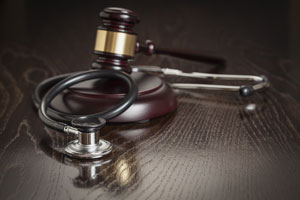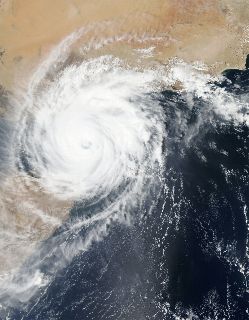More than two decades ago, Michael Mann and two other climate scientists published an article in Nature. The article included a graph showing that the Earth’s temperature had been stable for 500 years but had spiked upward in the twentieth century. A year later, they extended the graph to cover an entire millennium, supporting their argument that the upward spike in temperature was unprecedented within the last thousand years.
Because the spike at the end of the graph resembles a hockey stick, it came to be known as the “hockey stick graph.” As Mann explained in a 2018 article in Scientific American, the hockey stick graph received widespread attention, both from neutral media sources and from the fossil fuel industry. According to Mann, “industry-funded attack dogs” began a campaign to discredit him personally in order to “discredit the iconic symbol of the human impact on our climate.”
Criticism of Mann’s research was part of a broader assertion that climate scientists had fabricated evidence to demonstrate that human activity is responsible for global warming. Hacked emails were said to support a conspiracy that came to be known as Climategate. Neutral investigations determined that the conspiracy claims were unfounded.
Mann in particular was accused of manipulating or altering research findings, suppressing data, deleting emails to conceal wrongdoing, misusing confidential information, and engaging in other forms of scientific misconduct. An investigative panel at Pennsylvania State University, Mann’s employer, exonerated Mann of all the ethical charges that were lodged against him. The panel found that Mann did not seriously deviate from accepted practices within the academic community.
Mann’s Defamation Claim
In 2012, the Competitive Enterprise Institute (CEI) published a blog that criticized Penn State’s exoneration of Mann. The CEI has strong ties to the petrochemical, pharmaceutical, and tobacco industries.
As Jonathan Adler explains, “the post’s author, Rand Simberg, suggested Penn State was no more diligent investigating Mann than it had been investigating Jerry Sandusky. Mark Steyn quoted and elaborated on the CEI post with a post of his own on National Review Online.”
Mann sued a number of individuals and entities for libel and intentional infliction of emotional distress. Most of the defendants, including the CEI and National Review, have been dismissed from the suit, largely because Mann could not meet the high standard of proving that the allegedly defamatory statements about him were not just false but malicious. The two blog authors are the remaining defendants.
As the case finally approaches trial, the district court considered competing motions to exclude the testimony of expert witnesses relied upon by both sides. In a lengthy order, the court excluded all but one expert witness.
Court Decision
The district court emphasized that the lawsuit did not place climate science on trial. The only question raised by the lawsuit was whether the blog authors defamed Mann when they accused him of “molest[ing] and tortur[ing] data in the service of politicized science[,]” “engaging in data manipulation[,]” and creating the “fraudulent climate-change ‘hockey-stick’ graph[.]”
Still, the blog authors contended that their statements were true. The defamation claim therefore turns in part upon the validity of Mann’s research. In that sense, the lawsuit does put climate science on trial, at least to the extent that Mann contributed to climate science with the hockey stick graph.
The bloggers intended to rely on the testimony of two experts in the fields of climate science and statistics “to lend to the credence and the legitimacy of the allegedly defamatory statements.” Mann intended to call seven experts to establish that the authors’ claims were false and defamatory.
The court determined that, apart from the statistician’s opinions, none of the expert testimony was admissible. Remarkably, the court decided that none of the experts (apart from the statistician) based their opinions on a reliable methodology. In the court’s view, the experts instead based their opinions on “documents and articles that they have reviewed.”
Relying on documents and articles is hardly an unusual practice for experts. According to the court, however, an expert only follows a reliable methodology when the expert “systematically gathers, organizes and catalogs the documents such that another expert with similar training could follow the same procedure and arrive at the same result.” Regurgitating the opinions of others without analyzing and synthesizing the opinions, the court said, is not a scientific methodology.
According to the court, the experts merely summarized selected research studies and offered opinions about their conclusions. Yet some of the experts would have explained science to the jury. When experts are merely educating a jury rather than expressing opinions, the search for a “methodology” is misplaced.
Mann’s History of Science Expert
Take, for example, the proffered testimony of Naomi Oreskes, a professor of the History of Science at Harvard. She proposed to testify about the factors that make scientific opinions reliable. When asked what scientific methodology supported her opinions, Dr. Oreskes testified “reading and thinking.” The court ruled that reading and thinking is not a scientific methodology because jurors are just as capable of reading and thinking as are experts.
Yet jurors are not as well equipped as an expert in the history of science to understand how scientific research is conducted. That testimony might be characterized as fact testimony, informed by an expert’s understanding of the facts, rather than opinion testimony that must be supported by a methodology.
To the extent that Professor Oreskes would have applied the scientific method to the development of the hockey stick graph in order to opine that Mann followed reliable practices in developing the graph, it is difficult to understand why her testimony was excluded. The professor’s methodology was to apply the scientific method to Mann’s work and to express an opinion that his work was consistent with accepted research principles. The application of standards to a set of facts certainly seems like a reliable methodology.
The court complained that the reliability of the professor’s methodology could not be established because it was not peer reviewed, had no established success rate, and cannot be replicated by other experts in the field. Yet the professor was not conducting an experiment. Daubert emphasized that the test of reliability is flexible. Not every expert methodology depends on error rates or peer-reviewed research. The court’s narrow understanding of the Daubert decision shaped its decision to exclude most of the testimony that the parties proffered.
Professor Oreske also proposed to testify about the agenda-driven misuse of science by “think tanks” such as CEI that “ignore, misrepresent, or reject principled scientific thought on environmental and climate issues.” The court excluded her opinions about CEI’s history of distorting science to serve the ends of industry because she recounted CEI’s doubtful publications but “made no effort to compile or catalogue CEI’s publications according to an objectively defined set of metrics.” Perhaps Professor Oreske can testify as a fact witness regarding CEI’s history and allow the jury to draw its own conclusion about CEI’s bias.
Peter Frumhoff
Peter Frumhoff, the Director of Science and Policy and Chief Climate Scientists at the Union of Concerned Scientists, would have testified that the stolen emails revealed reasonable scientific techniques, not wrongdoing. The court again found that Frumhoff used no scientific methodology to reach that opinion. Testifying about the existence of a scientific technique and then analyzing an email to determine whether it describes a legitimate scientific technique sounds very much like a reliable methodology. Again, not all methodologies involve experiments and error rates.
Frumhoff would have testified that public attacks on scientists “can have detrimental effects on scientists, on the scientific enterprise, and on the public understanding of information and its societal implications.” That seems like fact testimony given by a knowledgeable observer about how attempts to disparage science diminish respect for scientists. It is doubtful that any methodology beyond observation is necessary to testify about the historical impact of unfounded criticism on science and scientists.
Frumhoff also proposed to testify about the ways in which climate change denial harmed Mann and climate science in general. The court concluded that the evidence was not relevant because the issue was whether Mann was defamed, not whether climate change is caused by human activity. The court decided that CEI’s alleged attempt to stifle climate science to support the agenda of the fossil fuel industry did not cause a harm that was unique to Mann and was therefore not relevant. To the extent that Frumhoff would have explained how reputational damage impairs the ability to obtain grants, the court decided that jurors understand how grant funders take an applicant’s reputation into account when they consider whether to fund a grant. Since most jurors have no idea how grant funders operate, the court’s analysis fails to appreciate how Frumhoff’s specialize knowledge would have assisted the jury.
Mann’s Other Experts
Other experts would have provided background information about the history of climate change. That evidence would have helped the jury decide that the hockey stick graph was not fraudulent. The court decided that the testimony was not relevant because it did not address the specific accusations of fraud made in the blogs.
The court excluded a computer scientist who was an expert in disinformation “because the Court has not previously been made aware of a field of study dedicated solely to tracking misinformation.” Judges are experts in the law, although they often fancy themselves to be experts in everything. The court’s lack of awareness that experts track disinformation illustrates why judges should defer to experts.
Gerald North chaired a National Research Council committee that investigated Mann’s work. He was prepared to testify that Mann’s research was valid, honest, and conducted in a scientifically appropriate manner. The court rejected that opinion, despite its obvious reliance on an expert evaluation of Mann’s research, because the court viewed North as reciting the committee’s opinion. Since committees can’t testify, one might think that the committee chair would be well positioned to describe how the committee arrived at its conclusions. The court again discussed error rates and peer review as if all expert knowledge depends on peer-reviewed research with known error rates.
Raymond Bradley would have testified as both a fact and expert witness about the research that supported the hockey stick graph. He would have refuted the bloggers’ claims about the invalidity of that research. The court decided that the “principles and methodologies he used” to conclude that Mann selected appropriate data points for his graph were insufficiently explained. That seems like an attack on the expert’s credibility, not on the reliability of the methodology the supports the expert’s opinions.
Defense Experts
Judith Curry has a doctorate in atmospheric science. She proposed to testify that it was reasonable to refer to the hockey stick graph as fraudulent in the sense that it was deceptive and misleading. She based her opinion on Climategate emails and public accusations of fraud. Of course, the fact that others may have defamed Mann does not prove that the bloggers did not.
Curry did not claim that Mann’s conclusions were fraudulent. She opined that it would be reasonable for members of the public to believe that they were fraudulent. The court determined that her opinion was inadmissible because it invaded the province of the jury. Whether the bloggers defamed Mann depended on whether they acted with actual malice. An expert in atmospheric science has no scientific basis for determining the bloggers’ state of mind. To the extent that she offered a lay or expert opinion about whether the public could reasonably perceive the hockey graph as fraudulent, she was no more qualified to do so than reasonable jurors.
Curry also proposed to testify about the deficiencies in Mann’s construction of the hockey stick graph without specifically disagreeing with his conclusion about the impact of human activity on climate change. The court concluded that Curry employed no scientific methodology to form that opinion. Rather, she “reviewed several articles and documents, and then opined that the conclusions of those documents are correct. Such methodologies are not derived from the scientific method and, thus, render Dr. Curry’s opinion unreliable as expert testimony.”
The court allowed a statistician, Abraham Wyner, to testify for the defense. Wyner plans to testify that there are “aspects of Dr. Mann’s work that can reasonably be construed as manipulative, if not in intent than in effect, as the word is used in common parlance.” The court concluded that Wyner “offers detailed analysis of the statistical methods used to construct the Hockey Stick graph, and why the methods may be reliable and, thus, tending to support a basis for Defendants’ statements.” The court was apparently satisfied that a discussion of statistics by a statistician constitutes a reliable methodology while the discussion of climate science by climate scientists did not.
Lessons Learned
The difference between an expert’s explanation of facts — an explanation based on knowledge that a lay juror is unlikely to possess — and an expert’s opinion testimony can create gray area that lawyers need to anticipate. Lawyers also need to anticipate attacks upon methodologies that do not rely on error rates and peer-reviewed research. Finally, lawyers need to make sure that experts explain their methodologies in sufficient detail to allow judges to understand that their opinions are sufficiently reliable for a jury to consider. Unfortunately, when judges are determined to exclude evidence regardless of its merit, there is little that lawyers can do apart from hoping that an appellate court might eventually take a different view.












